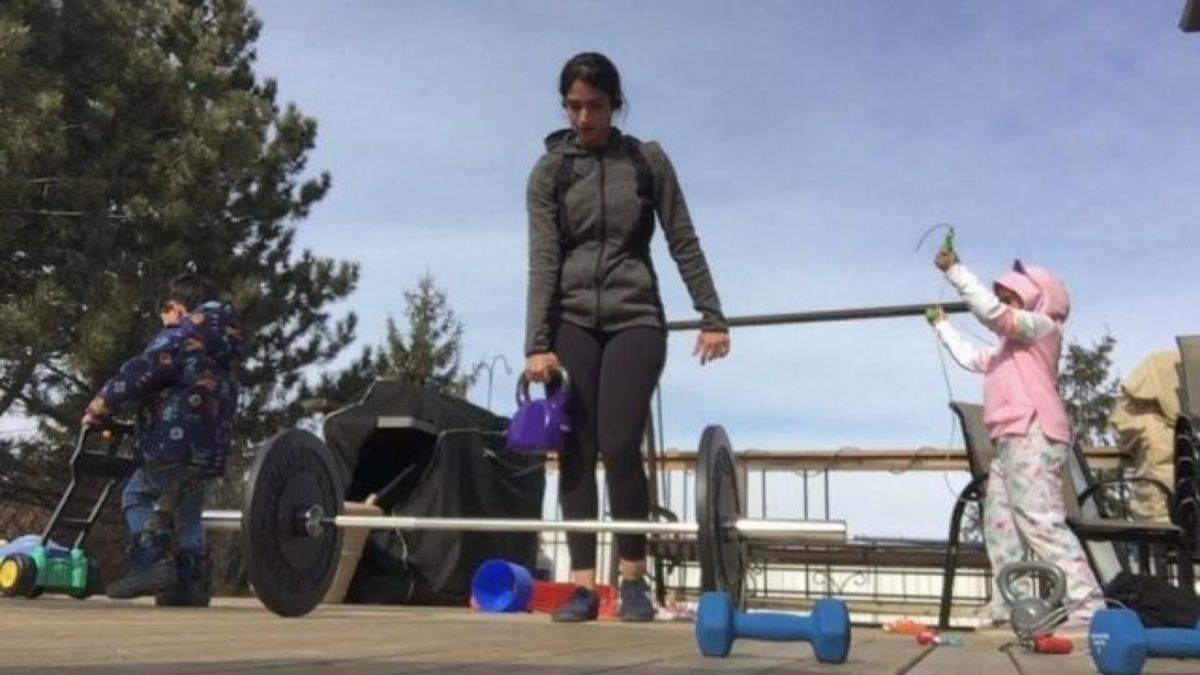A Fitness Instructor’s Guide to Raising Healthy Children
As a personal trainer, people expect that my family is as enthusiastic about fitness as I am. That my children are energetic and that we probably don’t eat any ice cream. As much as I wish it was true, it isn’t. My children aren’t any more active than the ordinary, nor are they overly enthusiastic about playing sports.
And as a child, neither was I. I was overweight and inactive well into my mid-twenties. My health and fitness has evolved over the years. And as a mom of an 8-year-old subdued girl and a 4-year-old active boy, I expect the same from them. As parents, we all are trying our best. So don’t be too hard on yourself if you feel your child is not as healthy as you’d like them to be.
Here are some strategies to try to help children stay active and eat better:
1. Be a role model
We know children are reflections of ourselves, so being a role model is the most important strategy you can employ. If the child sees you eating vegetables with every meal, it sets a precedent that they too will be eating a vegetable with each meal. If the child sees that exercise and movement are important to you, he/she will realize that movement is an important aspect of life. So the first step in healthy children is a healthy you and your relationship with food and exercise.
2. Make exercise enjoyable

Exercise can come in the form of sports that your children enjoy, playing in the park or any type of mind-body movement. Our household loves to dance, so on days we have to stay indoors, we put on music or Just Dance and have the children dance to 8-10 songs. Encourage activities they enjoy and try to avoid boxing them into only the activities that you enjoy.
Create challenges and goals that the children can aspire to, like racing with them, doing 1 more push-up than the previous time, or running another round, so that they stay motivated to reach a goal and finish. Reaching goals creates a positive mindset around movement so encourage them to push within a reasonable limit and make sure they can finish. Making them push too much can create negative feelings towards the activity so be mindful to push within their capacity.
3. Have plenty of fresh fruit and vegetables handy

Always have fruits and cut vegetables in abundance at your house. When they’re hungry between meals, encourage them to eat vegetables along with their snack. For picky eaters, fruits are a great segue into healthier choices. Eventually, mix fruit and vegetables with wholesome dips or cheese to have them eat more vegetables.
4. Slowly start swapping out
If you live in a household where candy/chocolate/junk food is a norm, instead of removing them suddenly, start finding substitutes and slowly phase out junk food. For example, if the children are used to eating cookies every day, substitute the cookies for homemade ones with a little less sugar and darker chocolate chips, and continue lowering it marginally. Within a few weeks, they will build a lower tolerance for excessively sweet foods. If deep-fried foods are the norm, start by pan-frying the foods and marginally decrease the oil until you can spray oil and bake/lightly saute food. Adults and children alike can learn to adjust, that is human nature. It just needs to be done slowly.
If you live in a blended family or joint family, having conversations with all members in the household about making better choices is crucial. It may be a difficult conversation to have, so first ensure to have an honest and open conversation with your partner. Once you’ve reached an agreement, speak with family members and stress to them the importance of the children’s health. We often like to say “the doctor suggested…” because we find that it holds more weight in the eyes of grandparents/aunts/uncles.
5. Encourage mindful eating

I’ve been blessed with two opposite children in body types and personalities. My daughter loves to eat and prefers seated activities like reading; while my son normally eats little and moves a lot. Regardless, I ask both children to focus on mindful eating: a process where you ask yourself, am I truly hungry? Do I need to eat more? Mindful eating requires that distractions be set aside, so avoid watching tv while eating or even reading books. Removing distractions and focusing on mindful eating allows children to bring more awareness to their hunger cues, a crucial habit that they will take with them to adulthood.
Lastly, if you’re looking to bring change in their routine, make changes sustainable by doing it slowly. Focus on a small step, allow your children to get comfortable with a small change, and then move forward. Remember that personal health and fitness is a journey, not a destination.
- A Fitness Instructor’s Guide to Raising Healthy Children - September 29, 2020







